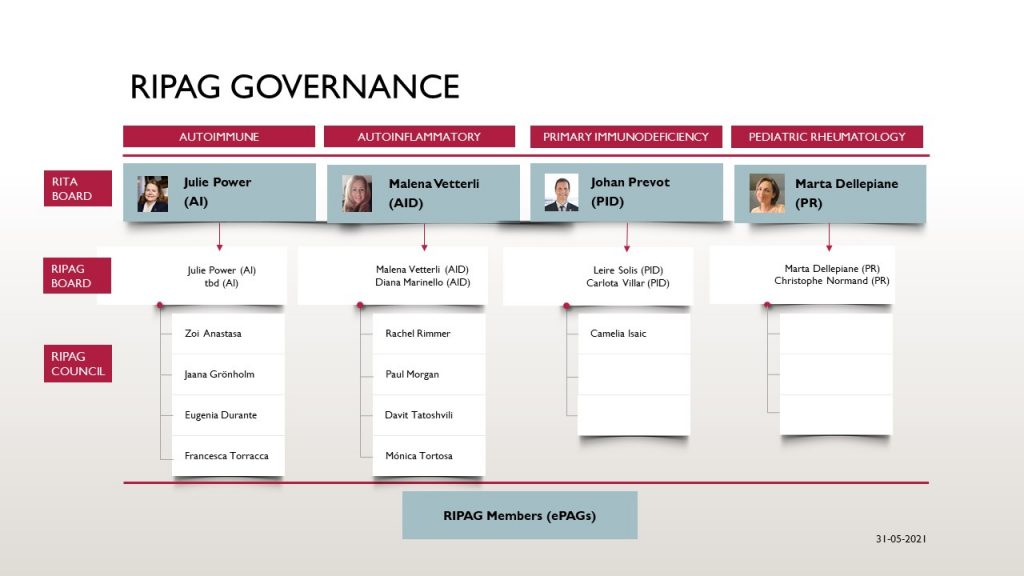INTRODUCTION
The patient-centered care and patient empowerment are founding principles of the European Reference Networks (ERNs), and therefore, patient organisations are integral to ERNs. Patient organisation participation enhances the capacity of ERNs to improve patient health outcomes and patient satisfaction.
ERN RITA includes 4 disease streams: Autoinflammatory Diseases, Primary immunodeficiency, Autoimmune diseases and Paediatric rheumatology. For more information on ERN RITA, please click here (link to the RITA main page).
RIPAG (the RITA patient advisory group) was formed to bring patient representatives together under one umbrella group to contribute to the network’s activities. RIPAG is open to all patient organization representatives active in the 4 streams of ERN-RITA.
MISSION
To safeguard the patient centric profile of the ERN RITA and contribute to the RITA network according to the critical role patients and patient representatives play, as experts by experience and co-producers of knowledge in all ERN activities.
PATIENT INVOLVEMENT IN RIPAG
Patient representatives taking part in RITA have come together to form RIPAG, the RITA Patient Advocacy Group. The mission of RIPAG is to safeguard the patient centric profile of the ERN RITA and contribute to the ERN RITA according to the critical roles played by patients and patient organisations, as experts through their experience and co-producers of knowledge in all ERN activities.
As ERN RITA represents four disease areas: primary immunodeficiency, autoinflammatory, autoimmune diseases and pediatric rheumatology, the patient groups collaborating within RIPAG also represent patients living with these diseases. To find out more about the RIPAG’s role, please click here.
Patient representatives participate in all the governing bodies of ERN RITA, for example, one patient representative per disease arm is active in the RITA Board. They are elected by their own stream, so that one patient representative per stream is appointed to the RITA Board. Patient representatives are also members of the different RITA working groups to ensure that the work done is patient centered.
RIPAG GOVERNANCE
To ensure an active and meaningful participation in RITA’s activities, patient organisation representation is organised as follows:
- RIPAG Board: A group of RIPAG Patient Representatives actively discussing patient engagement in RITA Working Parties and ensuring patient representation throughout RITA’s activities.
- RIPAG Council: A group of RIPAG Patient Representatives actively participating in RITA’s Working Groups.
- RIPAG Patient Representatives: Individuals within a RIPAG stream, having an official permanent mandate to represent their Patient Advocacy Group
- RIPAG Members: Patient Advocacy Groups involved in the four disease streams of RITA

